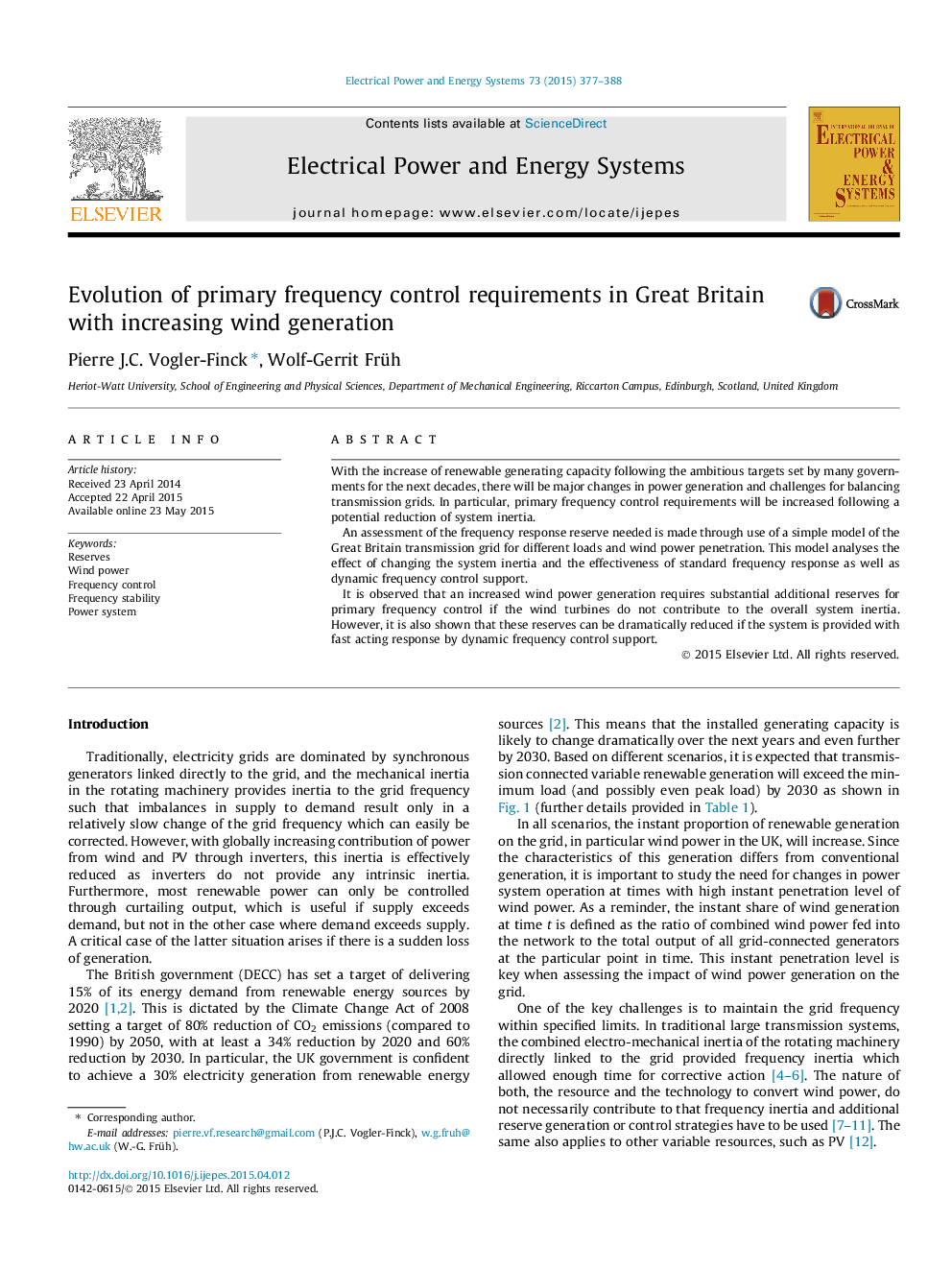| Article ID | Journal | Published Year | Pages | File Type |
|---|---|---|---|---|
| 399240 | International Journal of Electrical Power & Energy Systems | 2015 | 12 Pages |
With the increase of renewable generating capacity following the ambitious targets set by many governments for the next decades, there will be major changes in power generation and challenges for balancing transmission grids. In particular, primary frequency control requirements will be increased following a potential reduction of system inertia.An assessment of the frequency response reserve needed is made through use of a simple model of the Great Britain transmission grid for different loads and wind power penetration. This model analyses the effect of changing the system inertia and the effectiveness of standard frequency response as well as dynamic frequency control support.It is observed that an increased wind power generation requires substantial additional reserves for primary frequency control if the wind turbines do not contribute to the overall system inertia. However, it is also shown that these reserves can be dramatically reduced if the system is provided with fast acting response by dynamic frequency control support.
